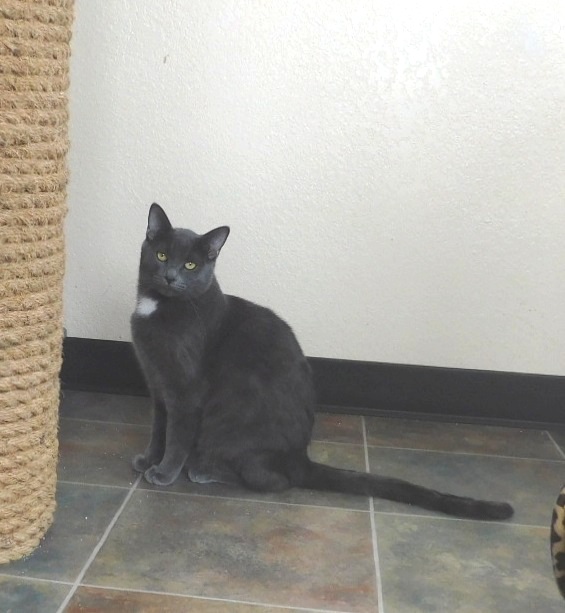
20 Feb Second Chance: Beware of Plastic Bowls
Second Chance Humane Society Animal Resource Center and Thrift Shops service San Miguel, Ouray & Montrose Counties. Call the SCHS Helpline at 626-2273 to report a lost pet, learn about adopting a homeless pet, or about the SCHS Spay/Neuter, Volunteer, Feral Cat, or other Programs. View our shelter pets and services online: www.adoptmountainpets.org.

Sterling
Have you heard that you should not use plastic bowls when feeding your cat because have been linked with facial pyoderma or chin acne in felines.
Plastic allergies have been implicated in some skin problems in children, but unfortunately there is no scientific data about this issue in cats. The scientific community is claiming that since plastics have changed over the years, the frequency of issues have decreased or disappeared entirely.
But the scientific community does not have the benefit of my feline perspective…
Why would I so brazenly question the “scientific community” you ask? Well there is that whole BPA thing for starters. You know, the chemical used in the manufacture of some plastics and resins that became a red-flag buzzword when it was found that it can seep into food and drinks and potentially have negative health effects. These concerns and the widespread use of plastics naturally sparked significant research efforts, but the FDA concluded that “BPA is safe at the current levels occurring in foods.”
Keep in mind that it is the FDA that also allows meat manufacturers to use carbon monoxide gas mixtures during the packaging process to prevent discoloration of meat, a process that may hide signs of spoilage from the consumer. It is also the FDA that allows for the use of recombinant bovine growth hormone (rBGH) in dairy cows, after concluding that humans drinking such milk were unlikely to absorb biologically significant quantities of it. (Since 1993, all EU countries have maintained a ban on rBGH use in dairy cattle.)
The FDA has also been criticized for permitting the routine use of antibiotics in healthy domestic animals to promote their growth, a practice now believed to contribute to the evolution of antibiotic-resistant strains of bacteria. Call me a crazy cat but these FDA folks seem like they may not have the best interests of consumers in mind in their “administrative” efforts.
If the above doesn’t discourage you from feeding felines in plastic bowls consider the fact that plastic dishes typically develop a porous surface which can be difficult to clean and provide an ideal living space for bacteria. This, combined with the presence of cat food, allows bacteria to thrive and might then transfer to your cat’s chin while dining. Although there are BPA-free plastic bowls I recommend avoiding plastic entirely (see above for rationale) and use easy-to-clean stainless steel or ceramics – cleaning being the best defense against bacteria.
The combination of moisture, food particles, and saliva present in food and water bowls creates an ideal environment for bacterial overgrowth. This overgrowth can present as a biofilm, a thin slimy layer of bacteria and other materials that sticks to the bowl. Sometimes biofilms are visible, but they may also be transparent—feel the bottom of your cat’s water bowl after dumping out old water to check for any sliminess. Washing your cat’s bowls frequently prevents biofilm.
My name is Sterling. I am a magnificent one-year-young boy with a beautiful grey fur coat. Although I pretend to be shy guy I secretly love lots of attention and my favorite game is Catch Me If You Can. When I am not pawing through FDA research I enjoy playing with toys and other cats. My siblings and I tend to get overlooked by adopters because of our initial timidity, but with a bit of patience your reward will be great.


Sorry, the comment form is closed at this time.